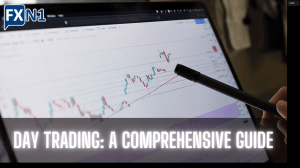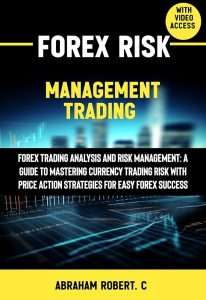Building a Robust Forex Trading System
Unlock Forex trading success! Learn to build a powerful, personalized trading system. Master risk management, strategy, and execution for consistent profits. Start your Forex journey today!
The foreign exchange market, or Forex, presents both immense opportunities and significant risks. Understanding and implementing a well-defined Forex trading system is paramount to navigating this complex landscape. Successful trading isn’t about luck; it’s about meticulous planning, disciplined execution, and continuous learning. This comprehensive guide will delve into the crucial aspects of building and utilizing a robust Forex trading system, equipping you with the knowledge to make informed decisions and potentially increase your chances of profitability. We will explore various strategies, risk management techniques, and the importance of psychological preparedness.
Understanding the Fundamentals of Forex Trading
Before diving into specific systems, it’s crucial to grasp the fundamental principles of Forex trading. This includes understanding currency pairs, pip values, leverage, margin, and the various order types available. Learning to read charts and interpret technical indicators is also essential. Forex trading operates 24 hours a day, five days a week, across different global markets, offering both advantages and challenges. It’s crucial to understand the global economic factors influencing currency values. This foundation will serve as a springboard for developing and deploying your Forex trading system effectively.
Currency Pairs and Market Dynamics
The Forex market trades currencies in pairs, such as EUR/USD (Euro/US Dollar) or GBP/JPY (British Pound/Japanese Yen). Understanding the relationship between these currencies is key to successful trading. Geopolitical events, economic news releases (like inflation data or interest rate decisions), and market sentiment can significantly impact currency values. Analyzing these factors is crucial in predicting price movements and making informed trading decisions. Learning to identify market trends and patterns is a crucial skill for any Forex trader.
Leverage and Risk Management
Leverage amplifies both profits and losses. While it can enhance potential gains, it also significantly increases the risk of substantial losses. Effective risk management is therefore non-negotiable. This involves setting stop-loss orders to limit potential losses on individual trades and determining an appropriate position size based on your risk tolerance and account balance. Never risk more than you can afford to lose. This principle underpins the longevity of any trading career.
Developing Your Forex Trading System
A well-defined Forex trading system comprises several key components: a trading strategy, risk management rules, and a clear plan for execution and monitoring. It’s crucial that the system is tailored to your individual trading style, risk tolerance, and available time commitment. A systematic approach minimizes emotional decision-making, a common pitfall for many traders.
Choosing a Trading Strategy
Several trading strategies exist, each with its strengths and weaknesses. These include scalping (holding positions for very short periods), day trading (closing positions within the same trading day), swing trading (holding positions for several days or weeks), and position trading (holding positions for months or even years). The optimal strategy depends on your individual preferences and market conditions. Thorough research and backtesting are essential before implementing any strategy.
- Scalping: High frequency, small profits, requires constant monitoring.
- Day Trading: Intraday trading, requires active market analysis.
- Swing Trading: Moderate time horizon, captures intermediate trends.
- Position Trading: Long-term approach, focuses on major market trends.
Backtesting and Optimization
Before deploying your Forex trading system with real money, it’s crucial to backtest it on historical data. This involves simulating trades using past price movements to evaluate the system’s performance. Backtesting helps identify potential flaws and optimize the system’s parameters to improve its profitability and risk management. This process allows for refining strategies and identifying potential weaknesses before risking capital.
Implementing Risk Management Rules
Risk management is the bedrock of successful Forex trading. This involves establishing clear rules to limit potential losses. These rules might include setting stop-loss orders to automatically exit a trade if the price moves against you, defining a maximum loss per trade, and diversifying your portfolio across different currency pairs. This proactive approach safeguards your trading capital and prevents catastrophic losses.
Essential Tools and Resources for Forex Trading
Several tools and resources can enhance your Forex trading experience. These include charting software, technical indicators, economic calendars, and educational materials. Leveraging these resources effectively contributes to more informed decision-making and improved trading outcomes. Continual learning and adaptation are crucial for success in this ever-evolving market.
Charting Software and Technical Indicators
Charting software allows you to visualize price movements and identify patterns. Technical indicators, such as moving averages, relative strength index (RSI), and MACD, can provide additional insights into market trends. Understanding how to interpret these tools correctly is a crucial skill for any successful Forex trader. Selecting the right software and mastering its features is a worthwhile investment of time.
Economic Calendars and News Sources
Economic calendars provide information on upcoming economic news releases, such as inflation data, employment reports, and interest rate decisions. These events can significantly impact currency values, so staying informed is crucial. Reliable news sources that provide timely and accurate information are invaluable tools in your Forex trading arsenal. Understanding the potential impact of news events on currency pairs is critical for strategic decision-making.
Psychological Aspects of Forex Trading
The psychological aspect of Forex trading is often overlooked but is equally crucial as the technical and fundamental analysis. Emotional decision-making, driven by fear and greed, can lead to poor trading choices and significant losses. Maintaining discipline, managing emotions, and developing a sound trading plan are key factors in achieving long-term success. Self-awareness and a commitment to continuous improvement are paramount.
Avoiding Emotional Trading
Fear and greed are powerful emotions that can cloud judgment and lead to impulsive decisions. Fear can cause you to exit trades prematurely, locking in losses, while greed can lead to holding onto losing trades for too long, hoping for a turnaround. Developing strategies to manage these emotions, such as setting clear trading rules and sticking to your plan, is crucial. This consistent application of a well-defined system is a significant differentiator between successful and unsuccessful traders.
Developing a Trading Journal
Maintaining a trading journal is an excellent way to track your performance, analyze your trades, and identify areas for improvement. This involves recording your trades, including entry and exit points, reasons for entering and exiting, and the overall outcome. Regularly reviewing your journal helps identify patterns in your trading behavior and refine your strategy over time. This process of self-reflection is essential for growth and consistent improvement.
Continuous Learning and Adaptation
The Forex market is constantly evolving, so continuous learning and adaptation are crucial for long-term success. Stay updated on market trends, economic news, and new trading techniques. Regularly review and refine your trading system to ensure it remains effective in the changing market conditions. This commitment to lifelong learning is fundamental to sustained success in this dynamic field.
- Regularly review market trends and news.
- Stay updated on new trading techniques and strategies.
- Continuously refine your trading system based on performance.
- Seek feedback from experienced traders and mentors.







